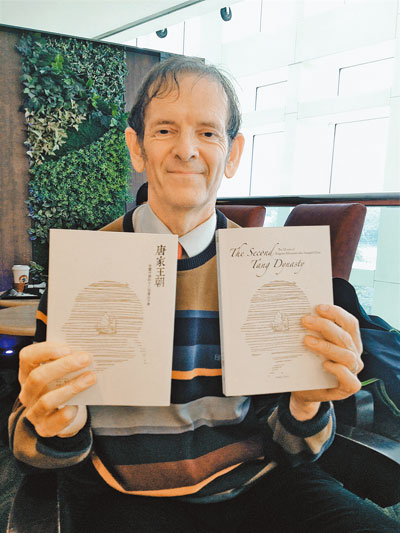
Cao Zhen
caozhen0806@126.com
OF all the historical figures from China’s turbulent period of the late Qing Dynasty (1644-1911) to the early 1900s, none was more significant than Sun Yat-sen. He was the first president and founding father of the Republic of China (1912-1949). He played a critical role in the overthrow of China’s last feudal reign and was regarded as the “forerunner of the democratic revolution.”
But contributing to China’s transformation during that unstable time included a whole cast of remarkable figures who came from the same county in Guangdong. They were Western-educated, achieved a great deal in their own lives and moved China forward on the long road of modernization. Some of their names can be found in history textbooks, but their life stories are mostly unknown.
In the book “The Second Tang Dynasty: The 12 Sons of Fragrant Mountain Who Changed China,” Hong Kong-based Irish author Mark O’Neill describes the lives of 12 extraordinary men from Xiangshan County (modern-day Zhongshan and Zhuhai cities).
These 12 men played major roles in the worlds of business, education, diplomacy, medicine and the military. Yung Wing (1828-1912) was the first Chinese graduate from Yale University in the United States. Tang Shaoyi (1862-1938) was the first prime minister of the Republic of China. Huang Kuan (1829-1878) was the first Chinese doctor of Western medicine. Tang Guo’an (1858-1913) was the first president of Tsinghua University.
The 12 biographies are based on research O’Neill did in libraries, museums and the figures’ former residences in Zhuhai. The author said it was his Hong Kong mother-in-law who inspired him to write the book. She told him that her family once had many famous neighbors in Xiangshan. After some Internet research, O’Neill found that Xiangshan produced an impressive number of men who were pioneers in the modernization of China.
“There were about 30 remarkable people in Xiangshan around that period, but I selected 12 for my book because they succeeded in different fields. Sun Yat-sen was also from Xiangshan, but he is too famous and there are many books about him, so I wanted to present the history of lesser-known figures,” said O’Neill in an interview with the Shenzhen Daily.
The author writes that since the arrival of the Portuguese in Macao nearly 300 years before, Xiangshan, a small county far from the imperial court in Beijing and the commercial metropolis of Shanghai, had been greatly influenced by the Western world. Some parents in Xiangshan had a broader perspective than most Chinese who “lived and worked in the same village and the same community.” Those parents saw the benefits of an education that would enable their sons to work in both Western and Chinese worlds.
One of O’Neill’s favorite figures, Yung Wing, was sent by his father to be educated in Macao and was then supported by a U.S. reverend to study at Yale University. After graduation, Yung returned home to dedicate himself to the modernization of China. He later initiated a program for 120 Chinese students to study in the United States and most of the students returned to use their expertise to improve China.
O’Neill argues that the 12 figures are models for modern people to follow and better examples than most public figures of their time. “When those pioneers studied abroad, they had to face hostility and mockery from Westerners. They could have lived a comfortable life abroad after graduation but chose to go back to China where they were regarded as ‘secondary foreign devils’ by conservative Chinese. The Qing government was corrupt, but those pioneers continued to propose reforms and contributed in many fields,” said O’Neill.
The author sees the pioneers as having a strong moral sense because they were reluctant to be corrupt and opposed the opium trade in China. “The society at that time was abnormal and it was very difficult to retain a strong sense of morality,” said O’Neill.
As the book concludes, these were men who were open-minded and “thought ahead of their time.” Many of their ideas were implemented by later governments and helped create a more outward-looking China.
The book’s title powerfully echoes the prosperous period of the Tang Dynasty (618-907) because some figures in the book were from Tangjiawan, a township where most people were surnamed Tang. The book is concise and could be better if it contained more details of the lives of the pioneers or if recollection from their descendants were included, although it is clear that there is limited source material for some of the lesser-known figures and some descendants couldn’t be easily found.
“The Second Tang Dynasty” (《唐家王朝》), published by Joint Publishing, has both English and traditional Chinese versionsand is available at bookstores in Hong Kong, Macao and from jointpublishing.com.
About the author
BORN in London and educated at New College, Oxford University, Mark O’Neill has worked as a journalist in Asia since 1978. He has been based in China, Japan and India for Reuters, BBC and the South China Morning Post. Speaking fluent Mandarin and Cantonese, as well as French and Japanese, O’Neill focuses on little-known history and has written five non-fiction English books — “Tzu Chi: Serving With Compassion,” “Frederick: The Life of My Missionary Grandfather in Manchuria,” “Chinese Labor Corps,” “From the Tsar’s Railway to the Red Army” and “The Second Tang Dynasty.”
“Frederick” is a fascinating biography of his missionary grandfather, who lived for 45 years in Faku, a small town in Northeast China since 1897. The author uses his grandfather’s work reports and diaries to tell the hard life story of Irish missionaries in China. With the title 《闯关东的爱尔兰人》, the book is available in Chinese from Joint Publishing bookshops, jointpublishing.com, jd.com and dangdang.com.
|

